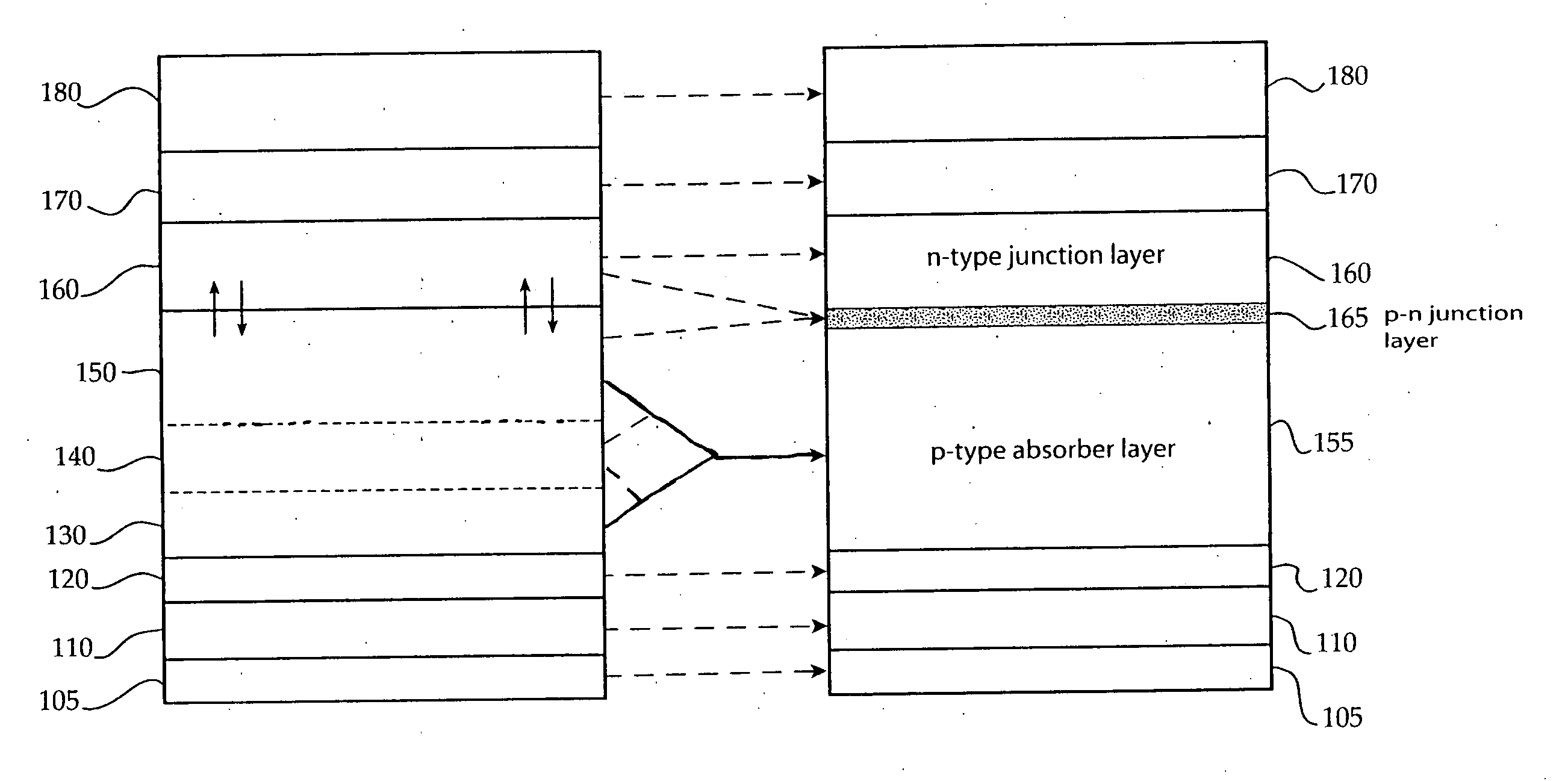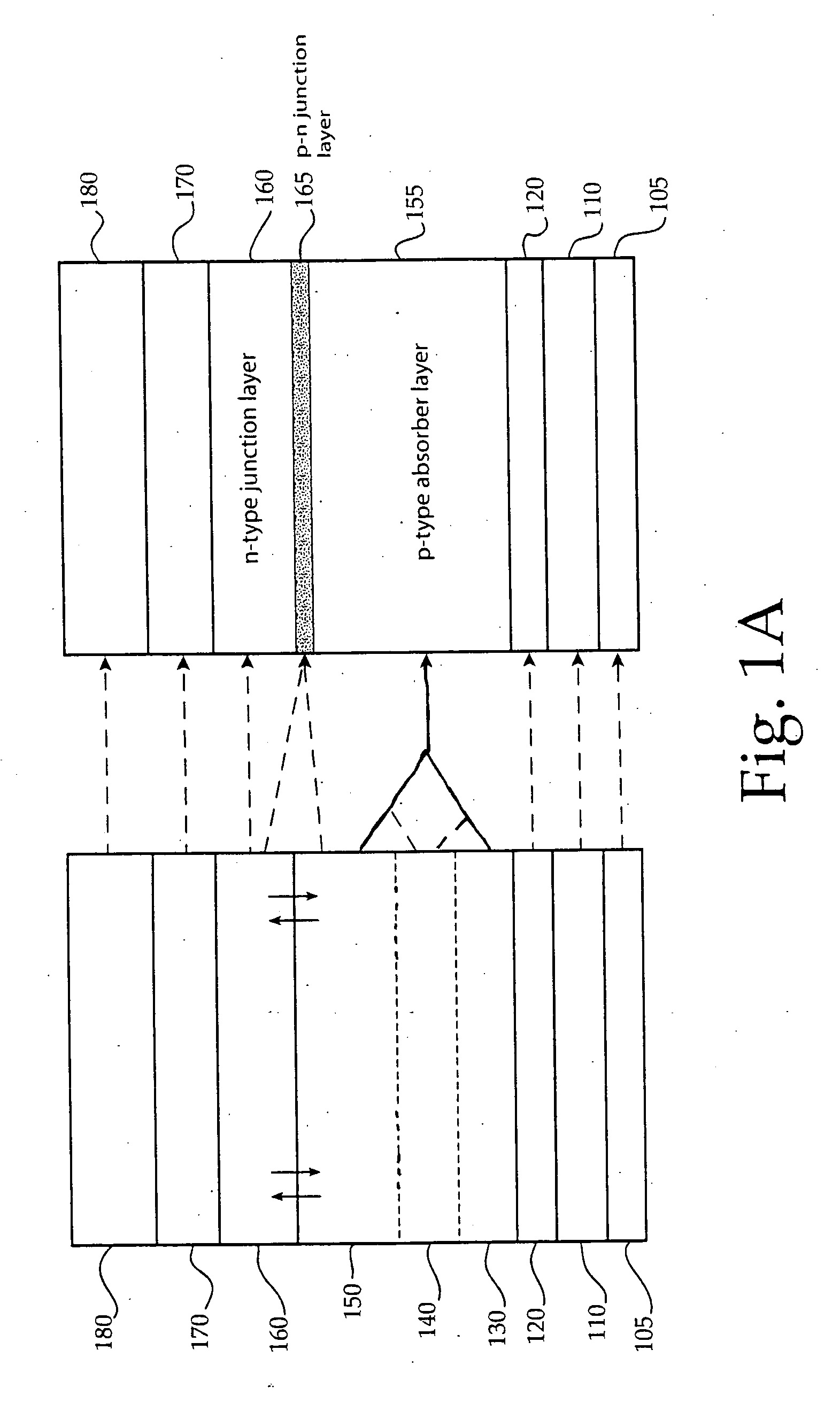Process and photovoltaic device using an akali-containing layer
a photovoltaic device and akali-containing technology, applied in the direction of pv power plants, light radiation electric generators, generators/motors, etc., can solve the problems of low production capacity, relegated photovoltaics to niche markets, and difficult to produce pv cells on a commercial scale at the appropriate cost-basis critical for commercial viability
- Summary
- Abstract
- Description
- Claims
- Application Information
AI Technical Summary
Benefits of technology
Problems solved by technology
Method used
Image
Examples
Embodiment Construction
[0032] The present invention details an aspect in the production of photovoltaic (PV) devices with the aim of increasing energy efficiency and maximizing device production. More advanced PV technology has utilized alloys comprised of periodic table group I, III and VI elements for more advanced light energy absorption. Specifically, this invention enhances the quality of a Cu:In:Ga:Se p-type absorber (CIGS) in a photovoltaic device through the integration of alkali metals, such as sodium, and a semiconductor layer. Like many related embodiments, the PV cells in this embodiment are created through the sequential deposition of discrete layers. Methods of deposition may involve techniques such as sputtering, evaporation or other related deposition methods known to those skilled in the art.
[0033] Viewing FIG. 1A, all layers are deposited on a substrate 105 which may comprise one of a plurality of functional materials, for example, glass, metal, ceramic, or plastic. Deposited directly o...
PUM
 Login to View More
Login to View More Abstract
Description
Claims
Application Information
 Login to View More
Login to View More - R&D
- Intellectual Property
- Life Sciences
- Materials
- Tech Scout
- Unparalleled Data Quality
- Higher Quality Content
- 60% Fewer Hallucinations
Browse by: Latest US Patents, China's latest patents, Technical Efficacy Thesaurus, Application Domain, Technology Topic, Popular Technical Reports.
© 2025 PatSnap. All rights reserved.Legal|Privacy policy|Modern Slavery Act Transparency Statement|Sitemap|About US| Contact US: help@patsnap.com



